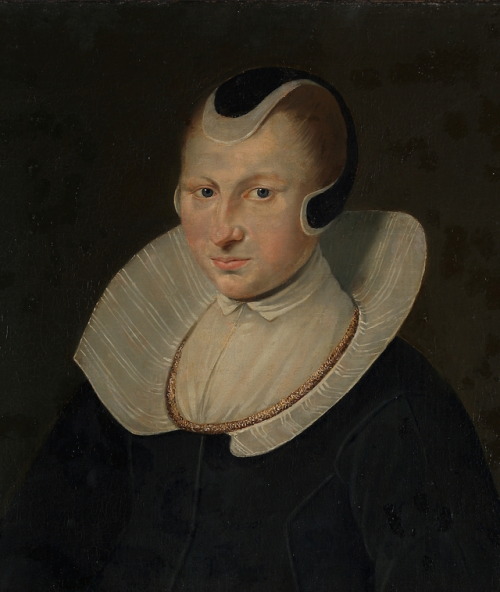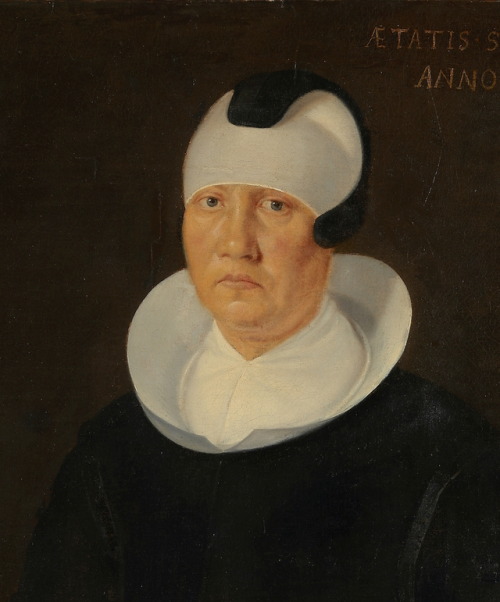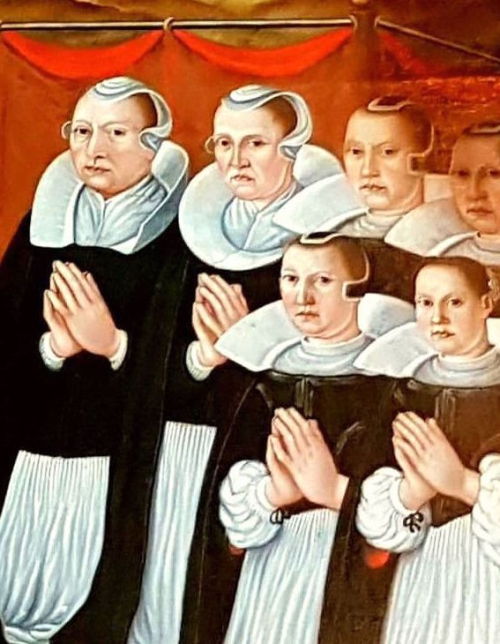#stavanger cathedral
A photoset of the most peculiar historical fashion I know of:
The Danish/Norwegian fashion for women from the 1630-70. A key feature is the “bluetooth” like headgarb, the last stage of the wired hood worn in the Renaissance (seen in the lower right depiction). By the mid 17th century it was reduced to a flat, three-flap linen cap with a black exterior, and it was reserved for married women only. Seeing a woman wearing such a hood in a large family depiction means you either see the wife or a married daughter.
Other key features is the large white collar turned up towards the head or out over the shoulders, heavily starched, plus the short black jacket emphasizing the belly. A white apron is also often worn. Another interesting feature is that the style is often accented with red, in lining, undergarbs or jewellery. It recreates the popular “tricolor” combo of antiquity: black, white and red.
Post link







